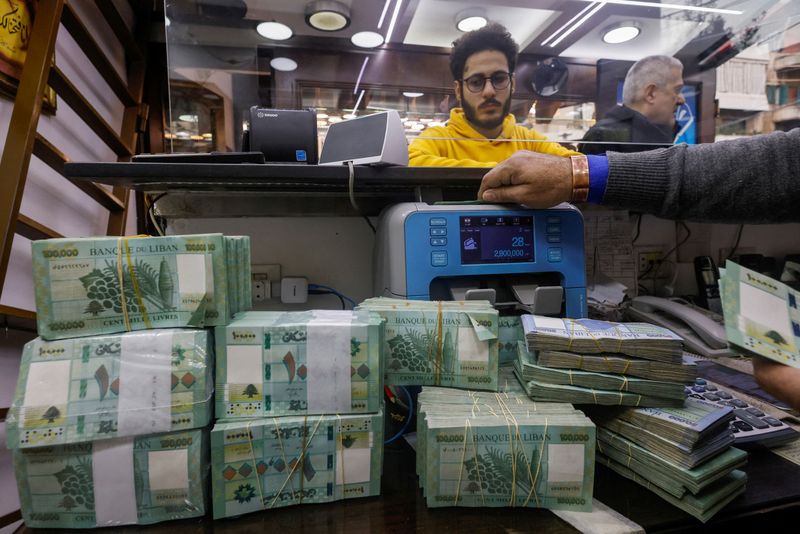 © Reuters. FILE PHOTO: A man counts Lebanese pound banknotes at an exchange shop in Beirut, Lebanon, January 11, 2023. REUTERS/Mohamed Azakir/File Photo
© Reuters. FILE PHOTO: A man counts Lebanese pound banknotes at an exchange shop in Beirut, Lebanon, January 11, 2023. REUTERS/Mohamed Azakir/File Photo
BEIRUT (Reuters) - Lebanon's central bank will begin selling unlimited amounts of U.S. dollars in a bid to halt the spiralling devaluation of the Lebanese pound, Governor Riad Salameh said on Tuesday.
Salameh set a new rate for Sayrafa, the central bank's exchange platform, at 90,000 Lebanese pounds per dollar on Tuesday. He set the rate at 70,000 on March 1 but it has steadily crept up, trading at 83,500 on the platform on Monday.
The Lebanese pound's parallel market rate weakened from roughly 121,000 to the U.S. dollar on Tuesday morning to 140,000 by the afternoon, prompting residents to briefly seal off roads in anger over their declining purchasing power.
The pound has lost more than 98% of its value since the economy began unravelling in 2019. The central bank revalued the pound officially from 1,507.5 to 15,000 per U.S. dollar in February but it has traded at a much lower and varying rate on Sayrafa.
Tuesday's move came with the approval of the caretaker premier and caretaker finance minister and aimed to "limit the devaluation of the Lebanese pound in the parallel market," Salameh said.
Those willing to trade could use Grade A exchange houses or banks which lift their strike, he said. Lebanese banks resumed a strike last week to protest against legal measures taken against them.
The pound began rising in value on the parallel market immediately after the decision was announced.
Unifying multiple exchange rates is one of several steps sought by the International Monetary Fund for Lebanon to clinch a $3 billion aid package that would help it emerge from the meltdown.
But as Lebanon approaches the one-year mark since it signed a preliminary deal with the IMF, residents are still dealing with a dizzying array of exchange rates.
Salameh said in February that Lebanon still had about $10 billion in foreign currency reserves. The country had more than $30 billion in FX reserves when the crisis began.

